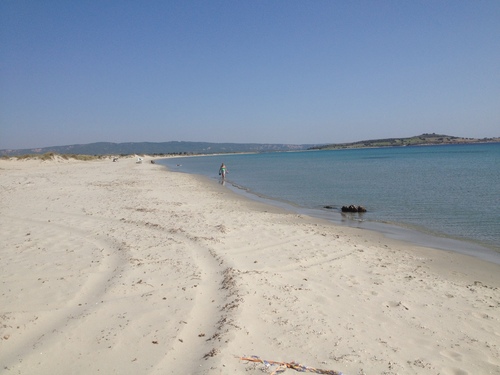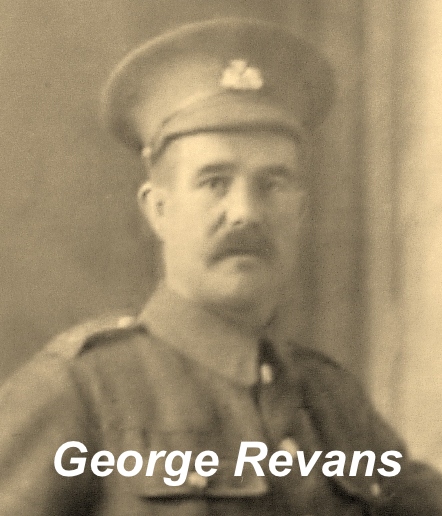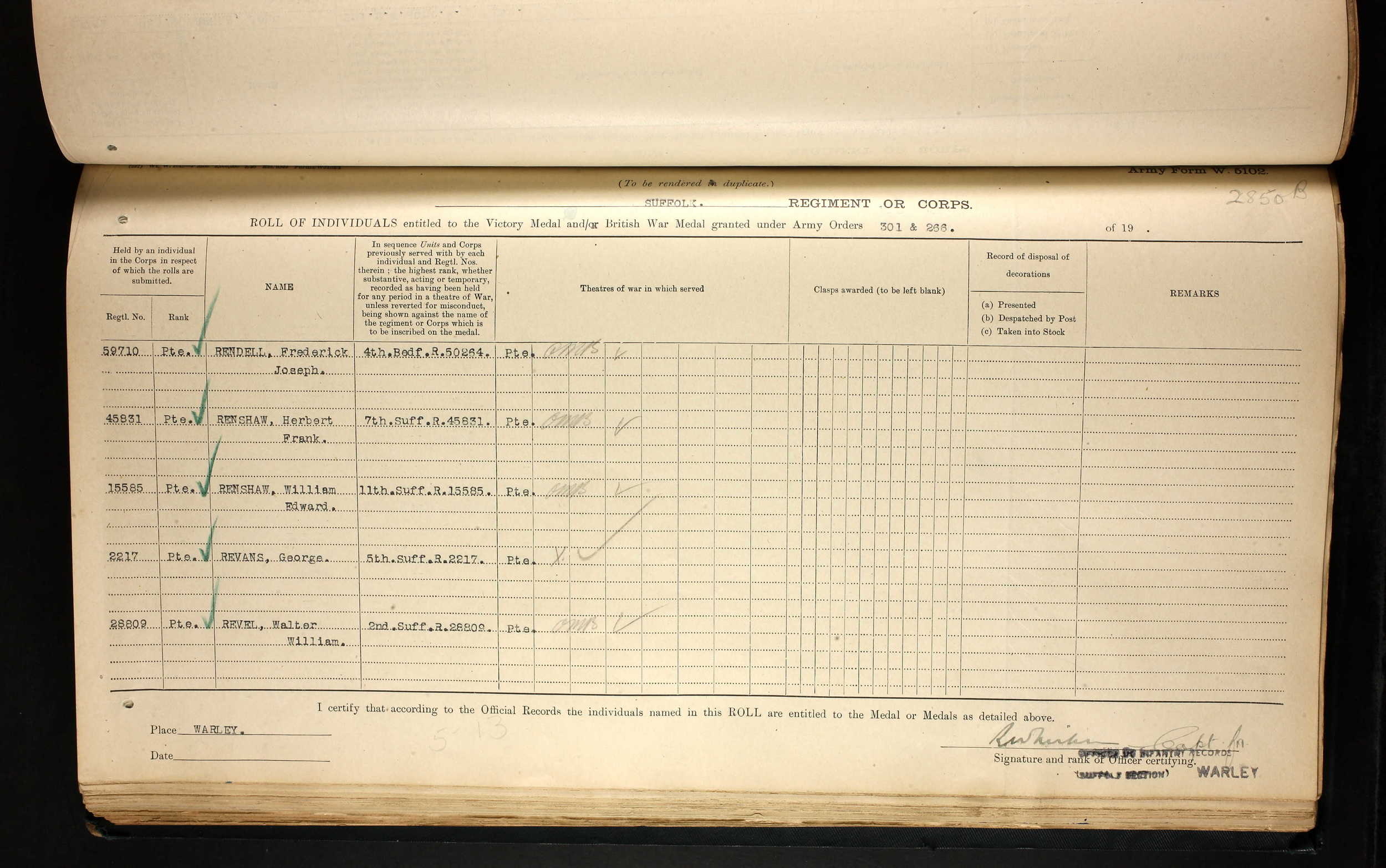George Revans
Rank: Private
Service Number: 2217
Date of Birth: 1883
Regiment: 'A' Company, 1/5th Suffolk Regiment
Date of Death: 12 August 1915
Age at death: 32
Cemetery / Memorial: Helles Memorial, Gallipoli
Country: Turkey
Grave / Reference: Panel 46 & 47
Relatives: Son of George Revans, husband of Elizabeth Revans
Address: Father-51 George St, Hadleigh
Wife, Lizabeth & children -132 Benton St, Hadleigh
Private George Revans was entitled to the above medals. The whereabouts of George's actual medals is currently unknown.
Private George Revans
The 1911 Census states that at that time, George was living with his wife Lizabeth and children at 117 Angel Street, Hadleigh. He was employed as a labourer. By 1915 the family had grown with the addition of two more children. After George's death, it appears that Lizabeth moved to 132 Benton Street. We are not yet sure why, but it is likely that the unfortunate change in her circumstances forced the move.
We are not exactly sure when George enlisted into the army, but it seems like many other young men from Hadleigh, George joined the local territorial battalion, the 5th Battalion the Suffolk Regiment. If we assume that he had joined the battalion before war broke out then we know that he would have been mobilised on the night of the 4th/5th August 1914.
It is believed that the photograph shown is of Lizabeth with the children in around 1915 / 1916. We are not sure who the older boy on the left is. Gladys (standing) born 1907, George (sitting right) born 1910, Charles (sitting left) born 1912, Ruth (sitting on mother's lap) born 1915.
Once mobilised the 1st/5th Suffolks spent a number of months carrying out home service tasks. At that time territorial units were liable for home service only and were not required to deploy overseas. However, when it became apparent that more troops would be needed for overseas service, the men of the battalion were asked to volunteer. After giving this some serious thought, 72% of the men volunteered and the battalion was redesigned 1st/5th Suffolk Regiment. Those who opted to stay on home service duties only, became the 2nd/5th Suffolks.
The landing beach at Suvla Bay
The 1st/5th Suffolks completed their training and preparation and were re-equipped for service in the eastern theatre. They embarked along with the rest of 163 Brigade and the 54 Eastern Division at the end of July from Liverpool bound for Gallipoli. They arrived and went ashore at Suvla Bay on 10th August 1915 and were quickly moved forward and by midday on the 12th were manning the forward trenches on the Anafarta Plain. At 4pm they were ordered forward as part of a 163 Brigade operation to clear the Plain of snipers in preparation for a much larger Divisional operation that was planned for the following day. The battalion was on the left of the brigade line and 'A' Company made up of Hadleigh men were in the first wave.
Remnants of a lighter used to ferry men ashore at Suvla
On that day, at least 15 men from Hadleigh were killed. Due to the nature of the fighting, their bodies were never recovered from the battlefield until the early 1920s. By then the remains were unrecognisable and could not be identified. The remains were most likely buried in Azmak Commonwealth War Grave Commission cemetery in an unmarked grave. This cemetery is in the area were the Suffolks held the front line. Their names are commemorated on the impressive Helles Memorial which stands on the southern tip of the Gallipoli peninsular.
Helles Memorial
There was at least 75 Hadleigh men involved and this was a true baptism of fire. They were told it would be a straight forward advance to mop up the odd sniper, but in reality they faced a determined and ruthless enemy. The enemies intimate knowledge of the ground was key. They sniped the Suffolks who could not see the firing points and even if they could, they had no artillery support to combat the snipers. In addition, the Turks made best use of their own artillery which ultimately halted the brigades advance. The Suffolks fell back to a shallow river bed / ditch where they formed the new front line. A few days later they were relieved and returned to the reserve trenches where they discovered that the attack had cost them dearly; 11 Officers and 178 Other Ranks were killed, wounded or missing. Although official records suggest that many of the Suffolks went missing on or after the 21st Aug, we now believe that they were actually lost during the advance on the 12th.
Azmak Military Cemetery close to where the 1/5th Suffolks advanced on 12 Aug 15


















